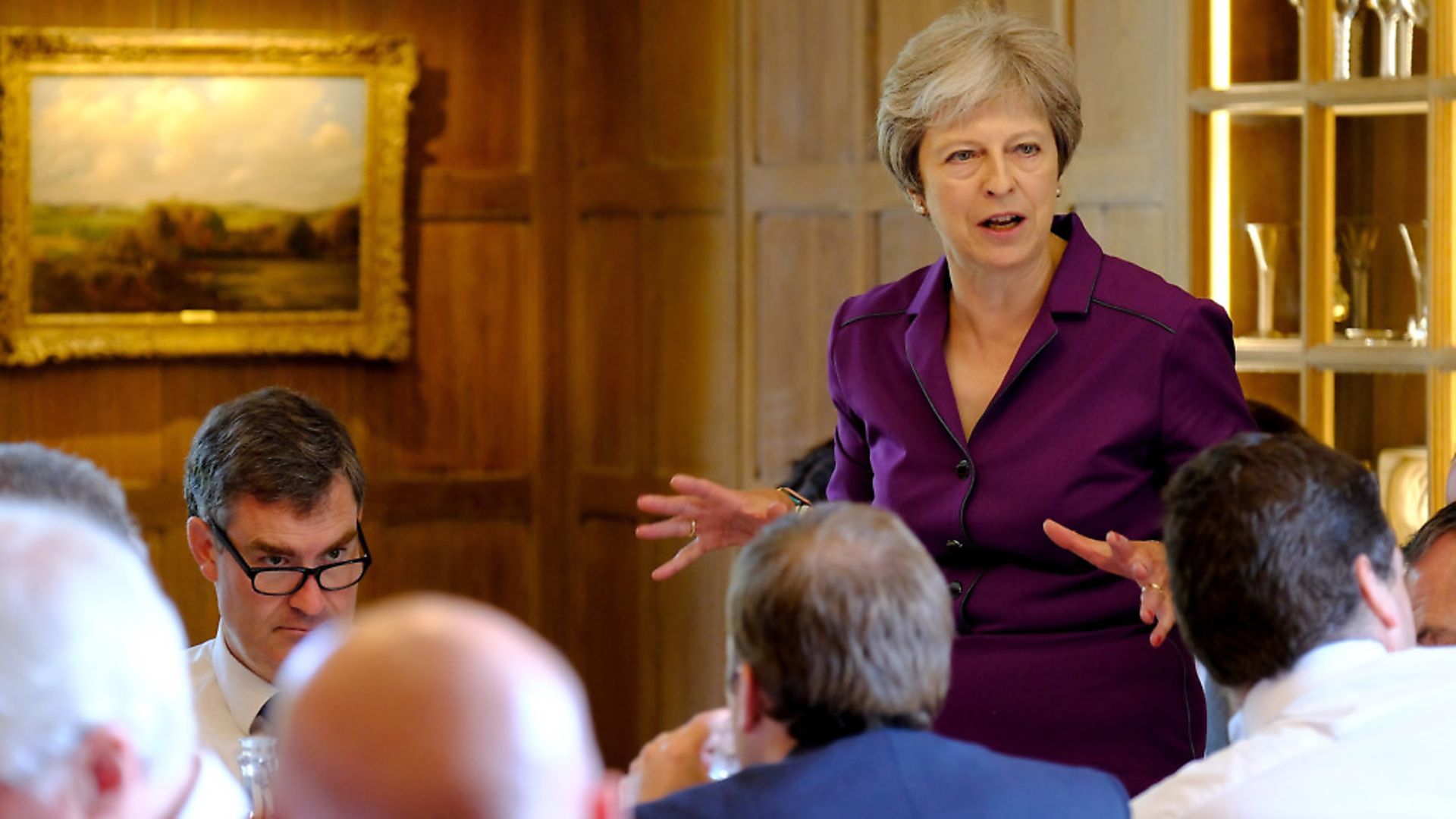
BARNABY TOWNS assess the balancing act facing Theresa May as she tries to keep her MPs, Tory members and the public happy
As Theresa May writes to Conservative Party members to win backing for her ‘Chequers compromise,’ and embarks upon a summer tour of Conservative Associations, the polite, but sceptical and unyielding response might remind her of the similar reception she received from a very different audience: President Macron at Fort de Brégançon.
The chasm between the worldly, charismatic and intellectual French president and the shrill, unthinking nationalism of those who prize Brexit above all else is wide and deep but not new.
Contrary to Brexiteer hyperbole and hysteria, it is far from surprising that the EU does not care for a proposal to unilaterally redesign its single market and customs union of 28 nations and 508 million people – from a departing member, months before its pre-announced exit date.
No less unimpressive is the fact that this proposal was conceived to paper over internal party differences and consequently threatens vital components of the national interest, including the United Kingdom’s sizeable services sector. Yet for two in three Conservative members, even the last minute, fraying ‘Chequers compromise’ is a step too far, according to a recent Conservative Home survey.
Tory leaders have navigated such differences — between the insistent demands of geopolitical and economic reality on the one hand, and the nationalist Right on the other — for nearly seven decades. Pivotal were two highly significant political moments — prime minister Harold Macmillan’s 1960 Cape Town speech recognising the ‘winds of change’ that marked the end of Empire in Africa; and his government’s decision the following year to apply to join the common market. But David Cameron and Theresa May have had a new power to contend with: the enfranchisement of party members.
Today’s Tory leadership election rules were introduced 20 years ago at a time of perilously low opinion ratings under William Hague, to provide better incumbency protection than that afforded to Margaret Thatcher and John Major. Giving predominantly Eurosceptic party members a final vote was one way to curb the ambitions of pro-European Kenneth Clarke, who Hague had defeated among Tory MPs following the party’s landslide 1997 defeat.
The 1998 party constitution requires a leadership election if the incumbent resigns, or if 15% of the parliamentary party – currently 48 Members of parliament – requests a vote of confidence in the leader. Should the extant leader win a simple majority in that vote, there cannot be another such vote for one year. However, if the leader loses that vote, as Iain Duncan-Smith did in 2003, they cannot stand in the subsequent leadership election. Importantly, this is a secret ballot, enabling members to vote against the leader without fear of reprisals.
Unless there is only one candidate, as happened when Michael Howard succeeded Iain Duncan-Smith in 2003, a series of exhaustive ballots is held until two candidates remain. Should both choose to go forward – Angela Leadsom chose to withdraw at this stage two years ago, making May’s election unopposed before members could vote – the candidate who achieves more than 50% of members’ votes is elected.
In raw numbers, membership participation expands the electorate. Nearly 200,000 members voted in the leadership election in which David Cameron defeated David Davis in 2005. Earlier this year, the party claimed 124,000 members – nearly 400 for every Conservative MP.
But this change also removed the party’s electorate further from the country’s. Conservative MPs must get elected to parliament in order to cast a vote in the party’s leadership election; in 2017, the average Tory MP represented an electorate of 74,437 voters. Even in ‘safe’ seats, where the sitting member’s majority is high, and which consequently are unrepresentative of the UK as a whole, MPs are still accountable to a strand of public opinion. By contrast, party members are self-selecting, chosen by no-one but themselves.
This system, in 2001, ensured that Eurosceptic Iain Duncan-Smith won among party members by 61% to 39%.
Today’s estimated 124,000 members represent in number fewer than one in 400 UK electors, compared to the almost 2.4 million voters registered in constituencies represented by Conservative MPs. Nonetheless, they may choose the next prime minister, should May lose a confidence vote.
Pro-Europeans could join the main parties in sufficient numbers, or wait it out for a new electoral system for Westminster, or parties could expand their electorates. But absent of such change the half of voters who wish to remain in the EU, and the six in 10 who don’t want to leave the single market or customs union, will continue to be eclipsed by the extremes.
Barnaby Towns is a writer and former Conservative Party special adviser









